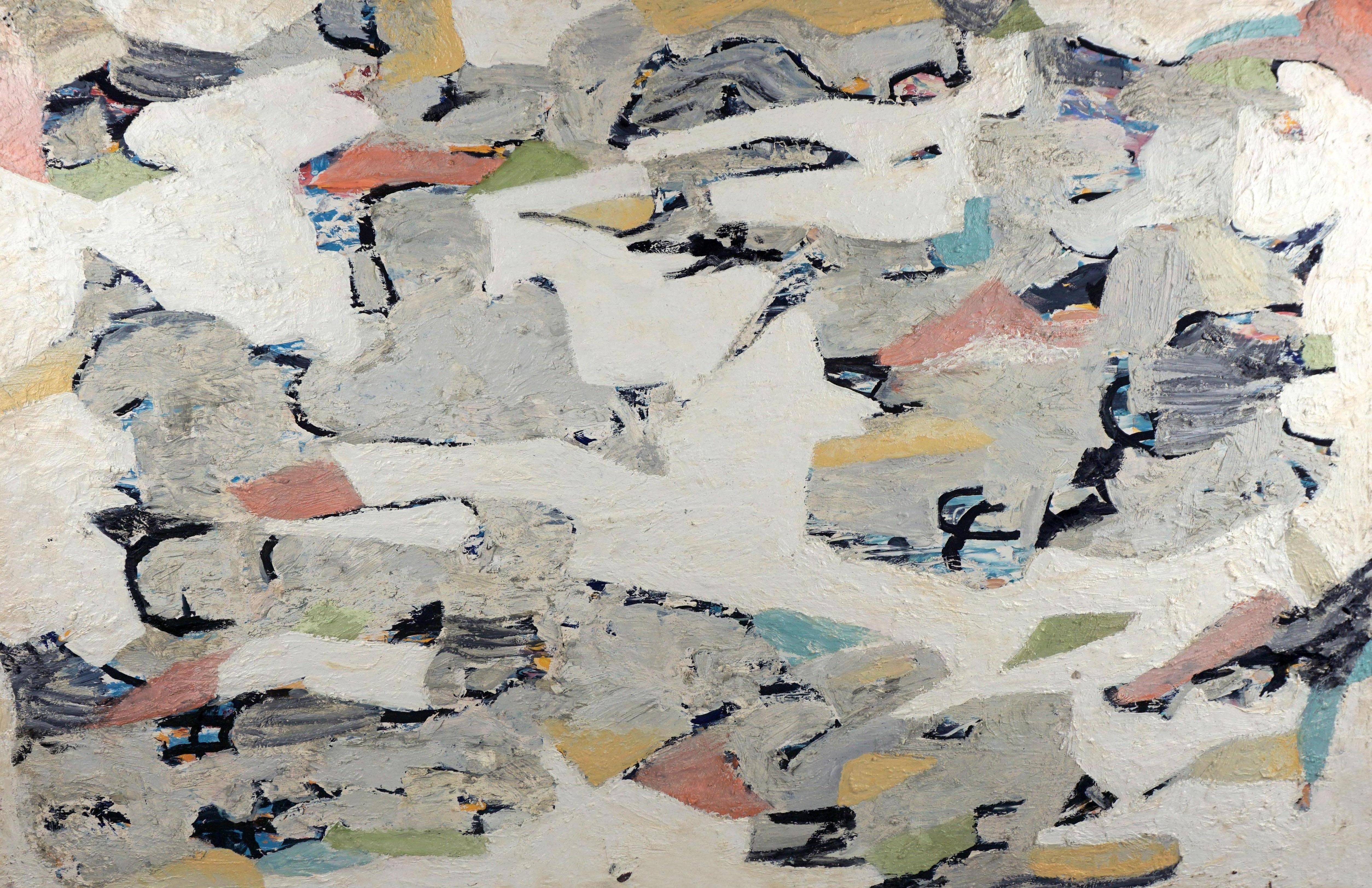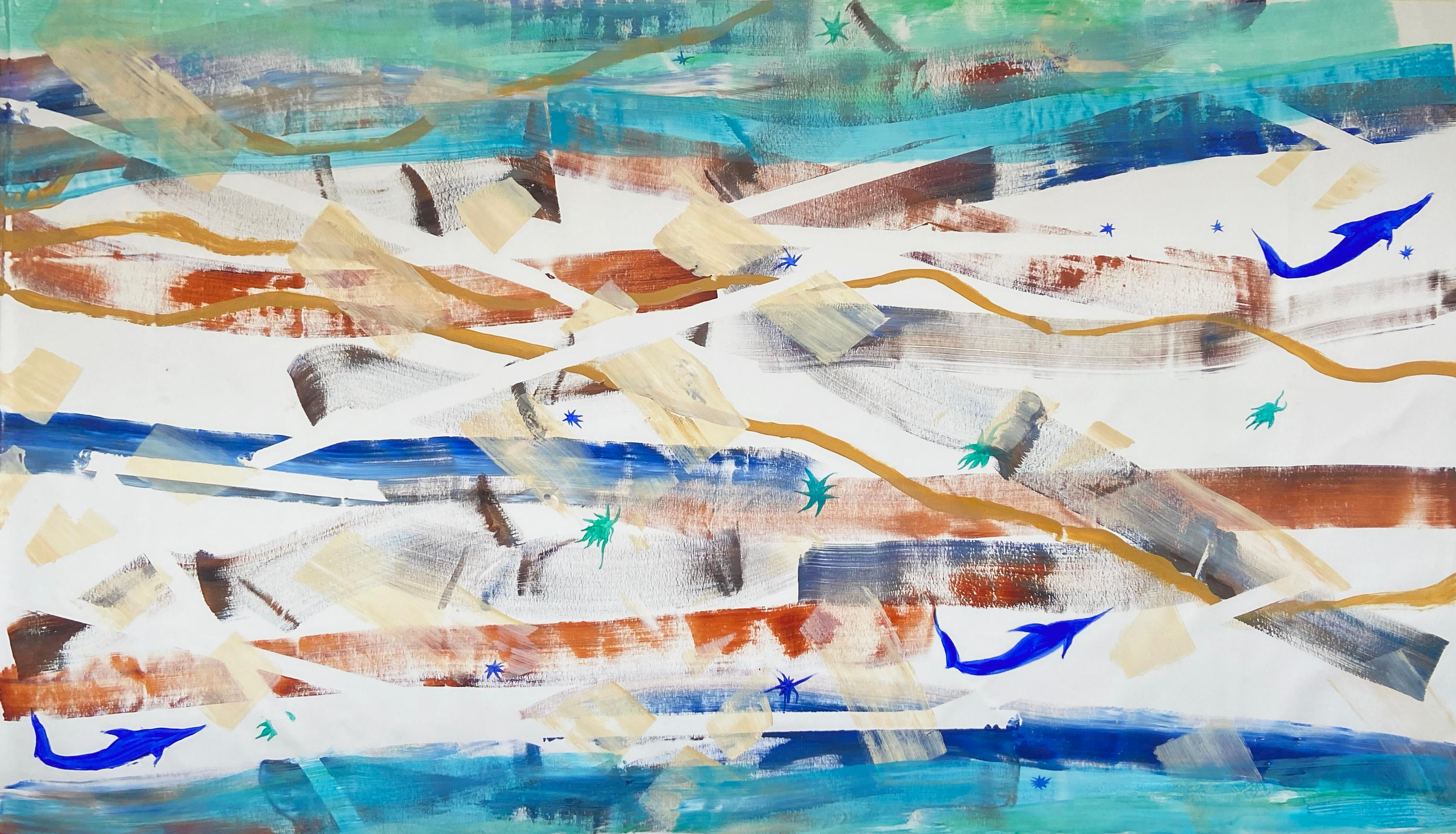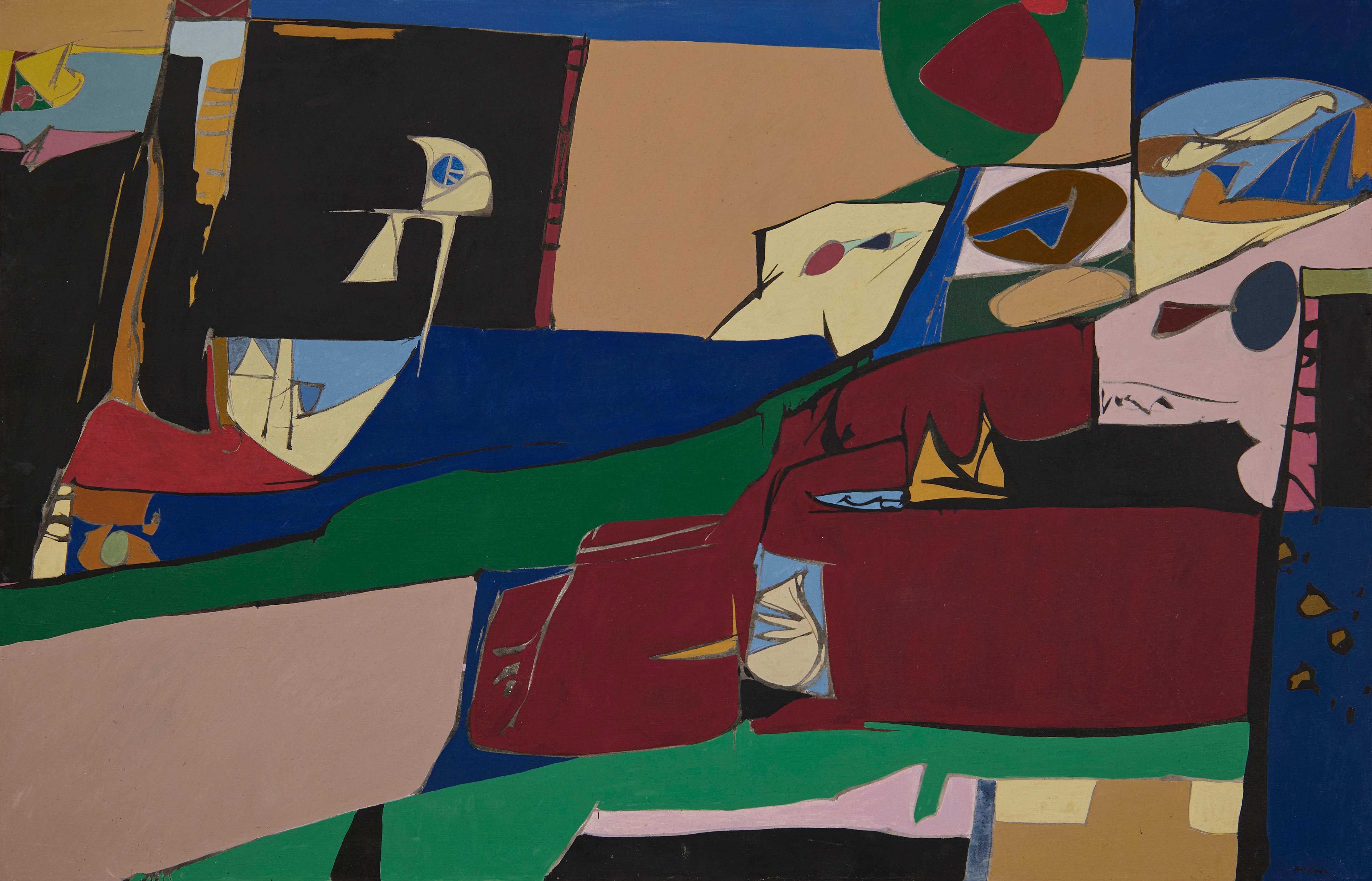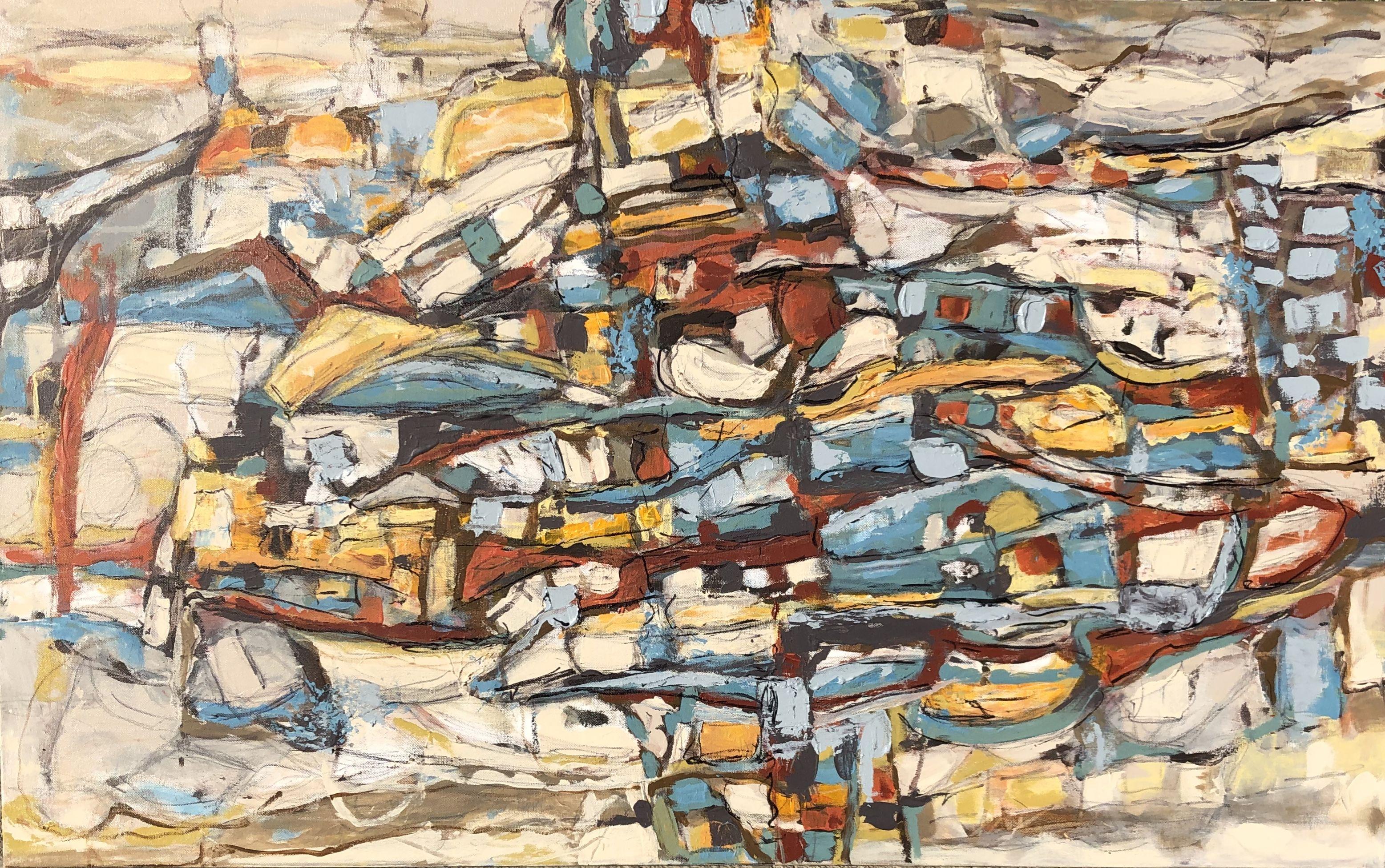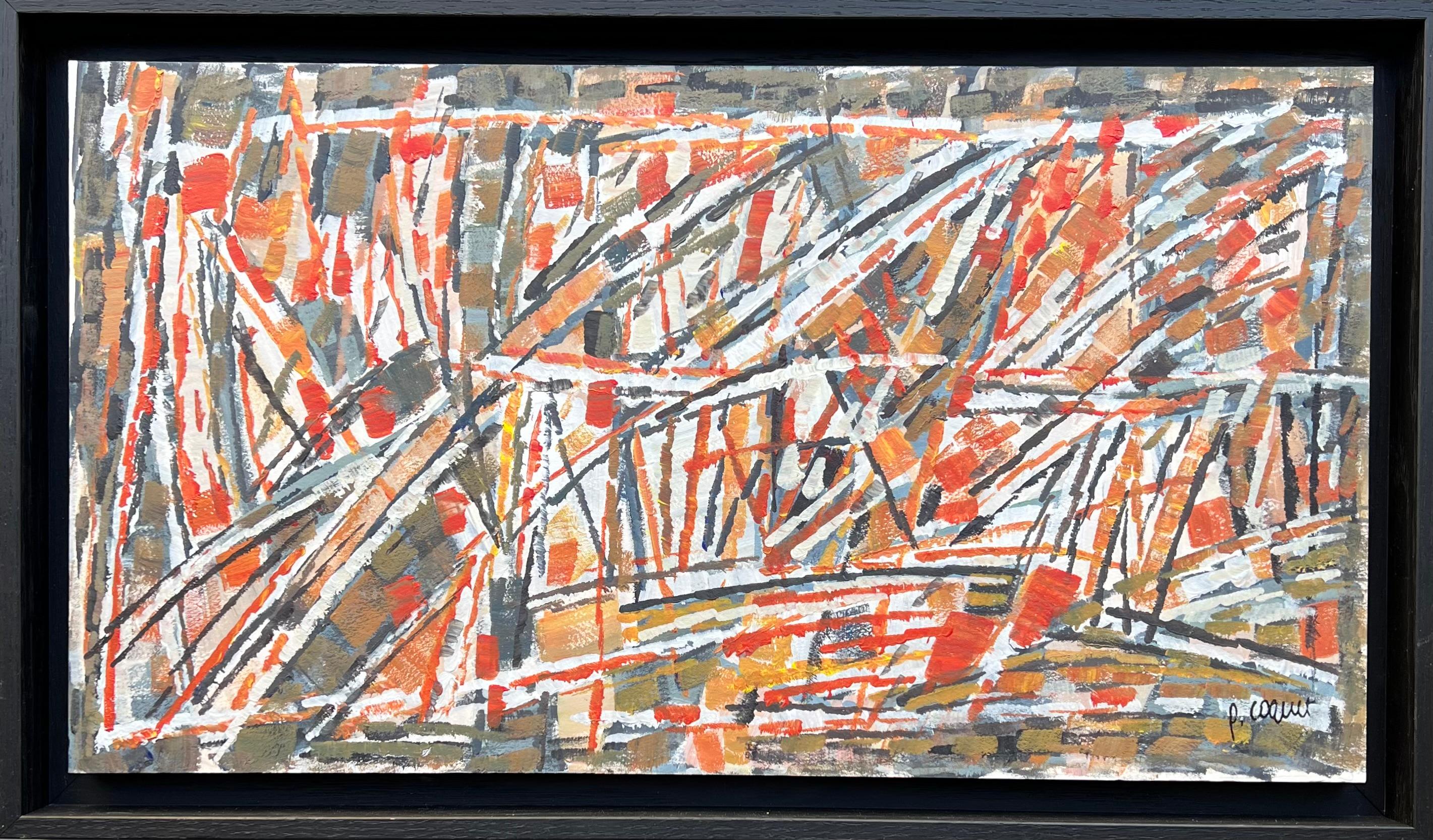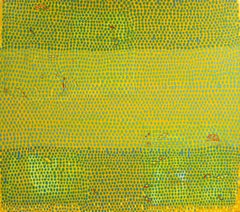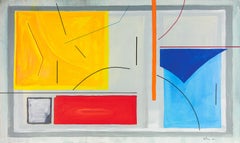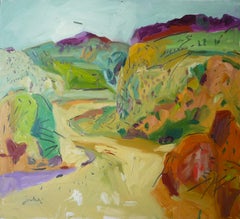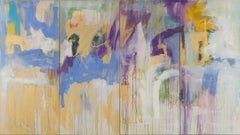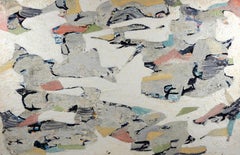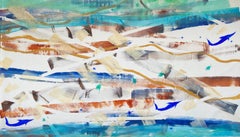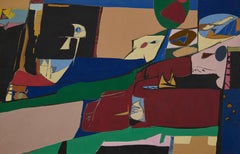Items Similar to Half Tide Salvages
Want more images or videos?
Request additional images or videos from the seller
1 of 5
Roger MartinHalf Tide Salvages1981
1981
$6,500
£4,942.21
€5,693.49
CA$9,241.29
A$10,043.69
CHF 5,307.70
MX$121,507.02
NOK 66,103.62
SEK 62,438.98
DKK 42,508.36
About the Item
This painting by Roger Martin (1925–2015) depicts the "Dry Salvages," rock formations off the coast of Rockport MA made famous in T. S. Eliot's poetry. The edges are clad in the artist's original strip-frame, 31 x 41 inches, overall.
Initialed and dated verso.
- Creator:Roger Martin (1925 - 2015, American)
- Creation Year:1981
- Dimensions:Height: 30 in (76.2 cm)Width: 40 in (101.6 cm)
- Medium:
- Movement & Style:
- Period:
- Condition:
- Gallery Location:Gloucester, MA
- Reference Number:Seller: TG13771stDibs: LU146127669202
About the Seller
No Reviews Yet
Vetted Professional Seller
Every seller passes strict standards for authenticity and reliability
Established in 2013
1stDibs seller since 2021
- ShippingRetrieving quote...Shipping from: Gloucester, MA
- Return Policy
Authenticity Guarantee
In the unlikely event there’s an issue with an item’s authenticity, contact us within 1 year for a full refund. DetailsMoney-Back Guarantee
If your item is not as described, is damaged in transit, or does not arrive, contact us within 7 days for a full refund. Details24-Hour Cancellation
You have a 24-hour grace period in which to reconsider your purchase, with no questions asked.Vetted Professional Sellers
Our world-class sellers must adhere to strict standards for service and quality, maintaining the integrity of our listings.Price-Match Guarantee
If you find that a seller listed the same item for a lower price elsewhere, we’ll match it.Trusted Global Delivery
Our best-in-class carrier network provides specialized shipping options worldwide, including custom delivery.More From This Seller
View AllBack and Forth
By Diane Ayott
Located in Gloucester, MA
Diane Ayott’s abstractions on paper, canvas, and panel are luxuriously physical objects resulting from the accrual of layer after layer of paint, color, and pattern, launched by imag...
Category
2010s Abstract Abstract Paintings
Materials
Canvas, Mixed Media, Acrylic
Variables
By Ed Touchette
Located in Gloucester, MA
Ed Touchette (b. 1948) is inspired by a love of architecture and public spaces to make paintings which express joyful wonder at our built environment — ol...
Category
2010s Bauhaus Abstract Paintings
Materials
Canvas, Acrylic
The Path
By Zygmund Jankowski
Located in Gloucester, MA
Zygmund Jankowski (1925–2009) painted traditional subjects with exuberant irreverence for traditional rules of color, composition, and perspective. He disparaged imitation and deligh...
Category
1980s Contemporary Landscape Paintings
Materials
Canvas, Oil
Price Upon Request
Softly
Located in Gloucester, MA
Patton Blackwell's "Softly" comprises four gallery-wrapped canvases 71 x 31.5 in. each, 71 x 126 in overall. It can be hung on the wall as a painting,...
Category
1990s Abstract Abstract Paintings
Materials
Canvas, Acrylic
$14,900
Everett, Massachusetts
Located in Gloucester, MA
Peter Lyons’s technique approaches photographic realism, but the precision in his paintings is an attempt to communicate a state of awareness, rather than ...
Category
2010s Contemporary Landscape Paintings
Materials
Oil, Panel
2 Pads
By Zygmund Jankowski
Located in Gloucester, MA
Zygmund Jankowski (1925–2009) painted traditional subjects with exuberant irreverence for traditional rules of color, composition, and perspective. He disparaged imitation and deligh...
Category
1980s Contemporary Landscape Paintings
Materials
Watercolor
You May Also Like
Abstract Coastal
By Michael Pauker
Located in Soquel, CA
Beautiful multicolor abstract expressionist oil painting with pops of grey, yellow, orange, green and blue on a wood panel by Bay Area artist Michael Pauker (American, b.1957). Flush...
Category
Early 2000s Abstract Expressionist Abstract Paintings
Materials
Wood, Oil
$3,080 Sale Price
20% Off
Sea landscape
Located in London, London
FRAMED
white wooden floating frame
The item is located in central London, United Kingdom.
acrylic, oil on canvas
one-of-a-kind
105x185cm
Full size 110x190cm
In this v...
Category
2010s Abstract Expressionist Abstract Paintings
Materials
Canvas, Cotton Canvas, Oil
$16,599
Erie Shore, Large Abstract Expressionist Mid-Century Modern geometric work
By Richard Andres
Located in Beachwood, OH
Richard Andres (American, 1927-2013)
Erie Shore, c. 1975
acrylic on canvas
signed lower right, signed and titled verso
50 x 72 inches
Richard Andres was born in Buffalo, New York in 1927. A graduate of the Cleveland Institute of Art in 1950, he was immediately drafted and served for two years in the army as a mural painter. He received his Master of Arts from Kent State in 1961. A frequent exhibitor at galleries and museums and winner of multiple May Show prizes, Andres taught art in the Cleveland Public Schools for 28 years, as well as teaching the University of Buffalo, the Cleveland Institute of Art and the Western Reserve University.
Very little in Richard Andres’ childhood would have predicted his love of classical music, mid-century-modern architecture and certainly not his lifelong passion for art and in particular abstract art. Richard’s father, Raymond, had no more than a third-grade education, and his mother, Clara, was one of thirteen children – only three of whom lived into adulthood and none of whom attended high school.
They lived, when Richard was a boy, in a dingy area of Buffalo, NY in a walk-up apartment situated above a tavern. Raymond and Clara supplemented the income from their factory jobs in the bar downstairs with Raymond playing ragtime on the piano and Clara serving drinks. This often left Richard and his two older brothers at home alone to fend for themselves. The two older boys, Raymond and Russell, were - unlike Richard- rather rough and tumble and entertained themselves with stickball, boxing and the like. Richard, on the other hand, from a very young age liked to draw, or better yet even, to paint with the small set of watercolors he received for Christmas one year. Paper, however, at the height of the depression, was hard to come by. Luckily, Clara used paper doilies as decoration for the apartment and Richard would contentedly paint and then cut up doilies, gluing the pieces together to create collages.
At eight-years-old, he discovered the Albright-Knox Museum (then known as the Albright Art Gallery) and spent several hours a week there studying the paintings. He was particularly fond of Charles Burchfield‘s landscapes, enamored with their ‘messiness’ and thinking that they somehow captured more ‘feeling’ than works he was previously familiar with. For his tenth Christmas, he asked for and received a ‘how-to’ paint book by Elliot O’Hare. Through this self-teaching, he assembled the portfolio needed for acceptance to Buffalo Technical High School where he studied Advertising Arts. In his Junior year, he was encouraged to enter a watercolor painting, “Two Barns,” in the national 1944-45 Ingersoll Art Award Contest and was one of twelve grand prize winners – each one winning one hundred dollars. More importantly the painting was exhibited at the Carnegie Institute Galleries, which resulted in his winning a national scholarship to the Cleveland School of Art (The Cleveland Art Institute).
He flourished at the art school under the tutelage of faculty members such as Carl Gaertner, as well as that of visiting artists such as William Sommer and Henry George Keller. He would say in later years that Gaertner, in particular, influenced his attitude toward life as well as art. “Gaertner,” Andres said, “believed that there was no need to be a ‘tortured artist’, that an artist should rather enjoy beauty, family, and life in general.” Free to spend his days as he chose, he wandered the Cleveland Art Museum for most of the hours he was not attending classes or painting; the remaining time was spent drinking coffee at a local hangout with art school friends – which is where he met fellow Henry Keller scholarship winner, Avis Johnson. Richard was immediately smitten with Avis, but being rather shy, it took him the entire summer of 1948 to build up his courage to ask her out. Over that summer he ‘thought about Avis’ and worked in a diner to save money. He also used the hundred-dollar prize money won in High School to visit the first Max Beckmann retrospective in the United States at the City Art Museum in St. Louis. Over a half century later he spoke of that exhibit with a reverence usually reserved for spiritual matters, “I walked in and it was like nothing I had ever seen before... the color...It just glowed.”
Returning to campus in the Fall, the first thing he did was go to the coffee shop in hopes of finding Avis. He did, and she, upon seeing him, realized that she was also smitten with him. They quickly became known as ‘the couple’ on campus, and a year later, with Richard being drafted for the Korean war, they were quickly married by a Justice of the Peace, celebrating after with family at Avis’s Cleveland home. As a gift, faculty member John Paul Miller...
Category
1970s Abstract Expressionist Abstract Paintings
Materials
Acrylic
Abstract Painting - Seascape by Wunderlich
Located in Winterswijk, NL
From a fabric of lines, surfaces, shapes and structures, balanced by matte and bright colors, the artist creates landscapes, fauna and flora, motifs of animate and inanimate nature. ...
Category
2010s Abstract Abstract Paintings
Materials
Canvas, Varnish, Acrylic
EVOLUTION # 11, Painting, Acrylic on Canvas
By Jeffrey Davies
Located in Yardley, PA
My paintings develop by experimenting with shape, style and color until I am satisfied with the balance, excitement, and energy that the work shares with the viewer. I am influence...
Category
21st Century and Contemporary Abstract Abstract Paintings
Materials
Acrylic
Abstract Composition, oil painting by Pierre Coquet
Located in Montfort l’Amaury, FR
Pierre Coquet – Abstract Composition
Reference number A256
Framed with a natural oak floated frame painted in black
34 x 55 cm frame included (29 x 50 cm without frame)
This work is painted with oil on a paper that is mounted on a board and placed in a made to measure wood strectcher. Stamp of the signature in the bottom right
Pierre was very sensitive to abstract paintings. He did a lot of abstract works melting colors and shapes in different atmosphere and style. Nevertheless he could come back to figuration and again to abstraction with no precise period of time.
Abstract paintings by Pierre Coquet represent a large part of his production.
The constant search for balance between shapes and colors as well as his passion for Nicolas de Staël, André Lanskoy, Alfred Mannessier… takes him on different paths from what we know of him.
His way of painting is strong and thoughtful, the lines stretch out and the harmonious touches, applied with sobriety, reveal a great sense of color.
Provenance : Workshop of the artist (stamped and numbered on the back)
Pierre Coquet (1926-2021) is a French painter who was born in Limas near Lyon, France.
He entered the Ecole des Beaux Arts in Lyon in 1942 and followed the teaching of Antoine Chartres, Henri Vielly and René Chancrin. He won a prize in 1945 and joined a movement that wanted to be outside of any school whose name ends with “ism”, (like impressionism, cubism…) between figuration and the renaissance of Abstract Art, bringing together young generations under thirty and eager not to submit to any technique. The “Sanzism” (literally without « ism ») will bring together, among others, painters: James Bansac, Roger Bravard, André Chaix, Jean Mélinand, Paul Clair, André Cottavoz, Pierre Doye, Jean Fusaro, Jacques Truphémus, André Lauran...
Category
1980s French School Abstract Paintings
Materials
Oil
$1,897 Sale Price
20% Off
More Ways To Browse
California Desert Oil Painting
Cambodia Painting
Carl Johansson Oil
Catherine Hills
Charles Pears
Charreton Victor
Chicago Cityscape Paintings
Christopher Osborne
Coastal Maine Paintings
Edwin Edwards
English River Scene Painting
F Luis Mora
Falling Snow Painting
Frida Willis
Garrett Middaugh
Genin Lucien
George Cole Oil Painting
Girl With Cows Oil Painting
